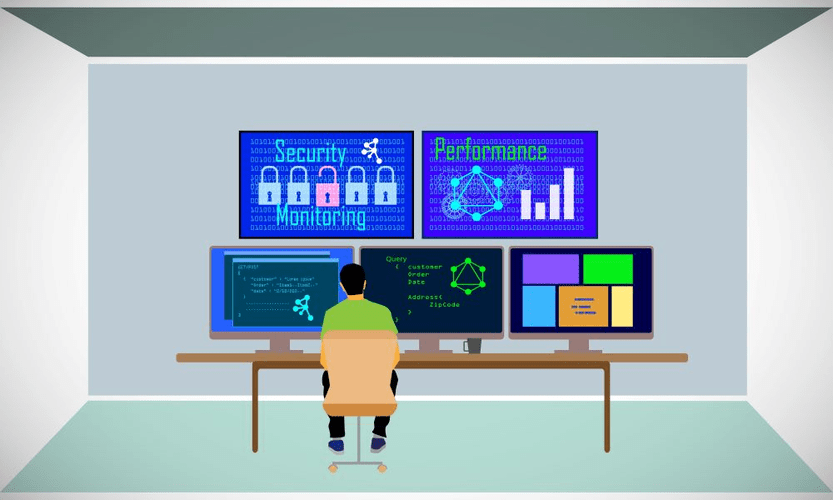It empowers you to speed up the development process, minimize prices, leverage the complete creative capacity of your staff, and more. Ultimately, any development team in each the IT and other industries can profit from implementing system growth life cycles into their projects. Use the above guide to identify which methodology you wish to use along side your SDLC for the best results. It’s advantageous for giant tasks since development teams can create very custom-made merchandise and incorporate any acquired suggestions comparatively early in the life cycle. Perhaps most importantly, the planning stage sets the project schedule, which could be of key significance if improvement is for a business product that have to be sent to market by a sure time.

Theoretically, this model helps groups to address small issues as they arise quite than missing them until later, more advanced levels of a project. The Big Bang mannequin is incredibly flexible and doesn’t observe a rigorous process or process. It’s mostly used to develop broad ideas when the customer or shopper isn’t sure what they need. This can include dealing with residual bugs that were system development life cycle (sdlc) not in a position to be patched before launch or resolving new points that crop up as a result of user stories. Larger systems might require longer maintenance stages in comparison with smaller systems. The starting stage (also known as the feasibility stage) is strictly what it sounds just like the section by which developers will plan for the upcoming project.
Rad (rapid Software Development)
The Waterfall mannequin is a linear and sequential approach to software program growth. Progression to the following stage solely occurs after the previous one is accomplished, making it challenging to adapt to changing necessities. The SDLC’s ultimate stage encompasses all of the activities wanted to deal with issues reported by real-world customers and implement any necessary changes to the software after deployment.

Finally, the planning process clearly defines the outline of system improvement. The project manager will set deadlines and time frames for every part of the software growth life cycle, guaranteeing the product is introduced to the market in time. The system development life cycle or SDLC is a project administration mannequin used to outline, design, develop, take a look at, and deploy an info system or software product. In other words, it defines the mandatory steps needed to take a project from the idea or concept stage to the actual deployment and additional upkeep. Successful execution of this section is essential for delivering a high-quality software program product.
An IT outsourcing associate can help you with the entire software program improvement course of. Based on the Business Specification doc, senior improvement team members deliver collectively the enter of stakeholders and specialists to plan out a software improvement project. The project may be centered on constructing a new software program product or bettering a present one.
The Importance Of Consumer Experience In Software Program Development
It’s critical to the user experience (and consumer satisfaction) to address any issues, enhance performance, and incorporate future enhancements. The development staff helps the client arrange the software environment, migrate knowledge, and configure the system. For example, some product improvement firms define the first two phases as Planning and Analysis and Define Requirements for a total of seven steps. Others (like Taazaa) combine them into a Requirements Gathering and Analysis stage. Because of its simplicity and readability, this structured methodology is appropriate for small tasks with precise necessities. However, its inflexibility reveals difficulties when changes occur after the beginning, and delaying client enter until later phases could lead to miscommunications.
In the requirements gathering and analysis stage, the product team discusses and examines the desired options, functionalities, and overall product objectives with stakeholders. The development group analyzes current techniques and workflows, determines technical feasibility, and defines the project milestones. The System Development Life Cycle is a structured course of or framework used to guide the event of an information system. The main SDLC meaning is to build high-quality IT systems that meet or exceed buyer expectations inside specified time and cost constraints. Object-oriented analysis and design (OOAD) is the process of analyzing a problem domain to develop a conceptual model that may then be used to information growth. During the analysis phase, a programmer develops written requirements and a proper imaginative and prescient document through interviews with stakeholders.
- However, it is weak to early delays and can result in massive issues arising for improvement groups later down the street.
- This part also involves offering technical help to end users and addressing their queries or considerations.
- The Big Bang mannequin is extremely versatile and doesn’t follow a rigorous process or process.
- Behavior-driven development, which uses testing outcomes based mostly on plain language to incorporate non-developers in the process, has turn out to be more and more popular.
- The DDS will be a pivotal part of the manufacturing course of (Stage 4), as builders will lean on it as their main useful resource to build their code.
The new seven phases of SDLC include planning, analysis, design, improvement, testing, implementation, and upkeep. New versions of a software program project are produced at the finish of each phase to catch potential errors and permit developers to continually enhance the tip product by the time it’s prepared for market. It’s linear and easy and requires improvement groups to finish one phase of the project completely before transferring on to the next. A system development life cycle or SDLC is actually a project administration mannequin. It defines different levels that are necessary to bring a project from its initial idea or conception all the greatest way to deployment and later upkeep. Do you may have an upcoming software program improvement project or current software program that has reached its maintenance stage?
Stage 1: Necessities Gathering And Analysis
The system development life cycle (SDLC) is an iterative, structured, and multistep course of that’s used by groups to create high-quality information methods. It entails the actions of planning, analysis, designing, building, testing, deploying, and maintaining a system that meets or exceeds client expectations. The software improvement lifecycle (SDLC) is a standardized process that IT, systems, and software engineering industries use to construct and check software products.

As a rule, these options help to finalize the SRS doc as well as create the first prototype of the software program to get the general concept of the means it should seem like. This contains the primary system prototype drafts, market analysis, and an analysis of rivals. SDLCs may additionally be more specifically used by techniques analysts as they develop and later implement a brand new information system. Thus, techniques analysts should have a fair mixture of interpersonal, technical, administration, and analytical abilities altogether.
What’s Dynamic Code Analysis?
An instance of the latter could be patches to resolve residual bugs that couldn’t be dealt with before launch. Large, advanced methods may require longer maintenance phases than smaller applications. Proper planning and design cut back the likelihood of costly changes and delays in later phases of growth.

Training usually covers operational training for assist workers in addition to end-user training. In systems design, features and operations are described intimately, together with screen layouts, enterprise guidelines, course of diagrams, and other documentation. Modular design reduces complexity and permits the outputs to explain the system as a collection of subsystems. As you can see, totally different methodologies are used relying on the specific imaginative and prescient, characteristics, and requirements of particular person projects.
What Are The 7 Phases Of Sdlc?
Proper system design ensures that the developed system aligns with the desired performance, performance, and scalability requirements. This stage involves deploying the developed system into the manufacturing surroundings. This consists of actions similar to system installation, knowledge migration, training end-users, and configuring needed infrastructure. Implementation requires cautious planning and coordination to minimize disruptions and guarantee a clean transition from the old system to the new one. Iteration and pace are very important elements of fast application development or RAD.

You’ll study its core which means and phases, main software engineering methodologies, and the most important advantages it can provide throughout project improvement. The V-model (which is brief for verification and validation) is sort of much like the waterfall model. A testing section is incorporated into each growth stage to catch potential bugs and defects. This is the place Static Application Security Testing or SAST tools come into play.
SDLC methodologies fit inside a flexibility spectrum starting from agile to iterative to sequential. Sequential or big-design-up-front (BDUF) models, corresponding to waterfall, concentrate on full and proper planning to guide bigger projects and restrict dangers to profitable and predictable outcomes. [6] Anamorphic development is guided by project scope and adaptive iterations.
Step 6: Deployment Section
Alternative growth paradigms, such as fast application growth (RAD), could additionally be suitable for some tasks however sometimes carry limitations and ought to be considered fastidiously. The Agile mannequin prioritizes collaboration and the implementation of small modifications primarily based on regular suggestions. The Agile mannequin accounts for shifting project requirements, which may turn out to be obvious over the course of SDLC. It is important that you have got contingencies in place when the product is first released to market should any unexpected issues come up. Microservices structure, for instance, makes it simple to toggle options on and off. A canary release (to a restricted variety of users) may be utilized if needed.
This is the most essential step as a result of it sets the tone for the project’s overall success. Another key reason why teams have to leverage an SDLC is, it is important that they plan forward of time and examine the structured objectives and levels of a selected project. Having a system improvement life cycle is crucial as it serves as a platform to remodel an idea into a practical and fully-operational system. Each improvement phase corresponds to a testing section, and testing activities are deliberate alongside growth. Once QA greenlights the software program, it have to be ready for release to the customers.

The goal is to establish and tackle defects, ensuring the system meets specified necessities and high quality standards. Thorough testing contributes to a robust and dependable design, gaining user acceptance and paving the way for successful implementation. SDLC represents a giant number of complicated models utilized in software improvement. On a sensible degree, SDLC is a basic methodology that covers totally different step-by-step processes needed to create a high-quality software product. However, the SDLC’s advantages can solely be realized if everybody follows the plan. Without the entire team’s buy-in, the software growth life cycle could be more of a hindrance than a help.
This evaluation helps project managers build a picture of the long-term resources required to develop an answer, potential market uptake, and which obstacles would possibly come up. That is why it’s extremely really helpful that project managers interact a dedicated group of skilled developers. Such a group will possess enough expertise and information to launch a first-class software product that completely corresponds to all of your expectations, wants, and targets. If you’re a developer or project manager, an understanding of the most up-to-date SDLC methodologies is a robust device.